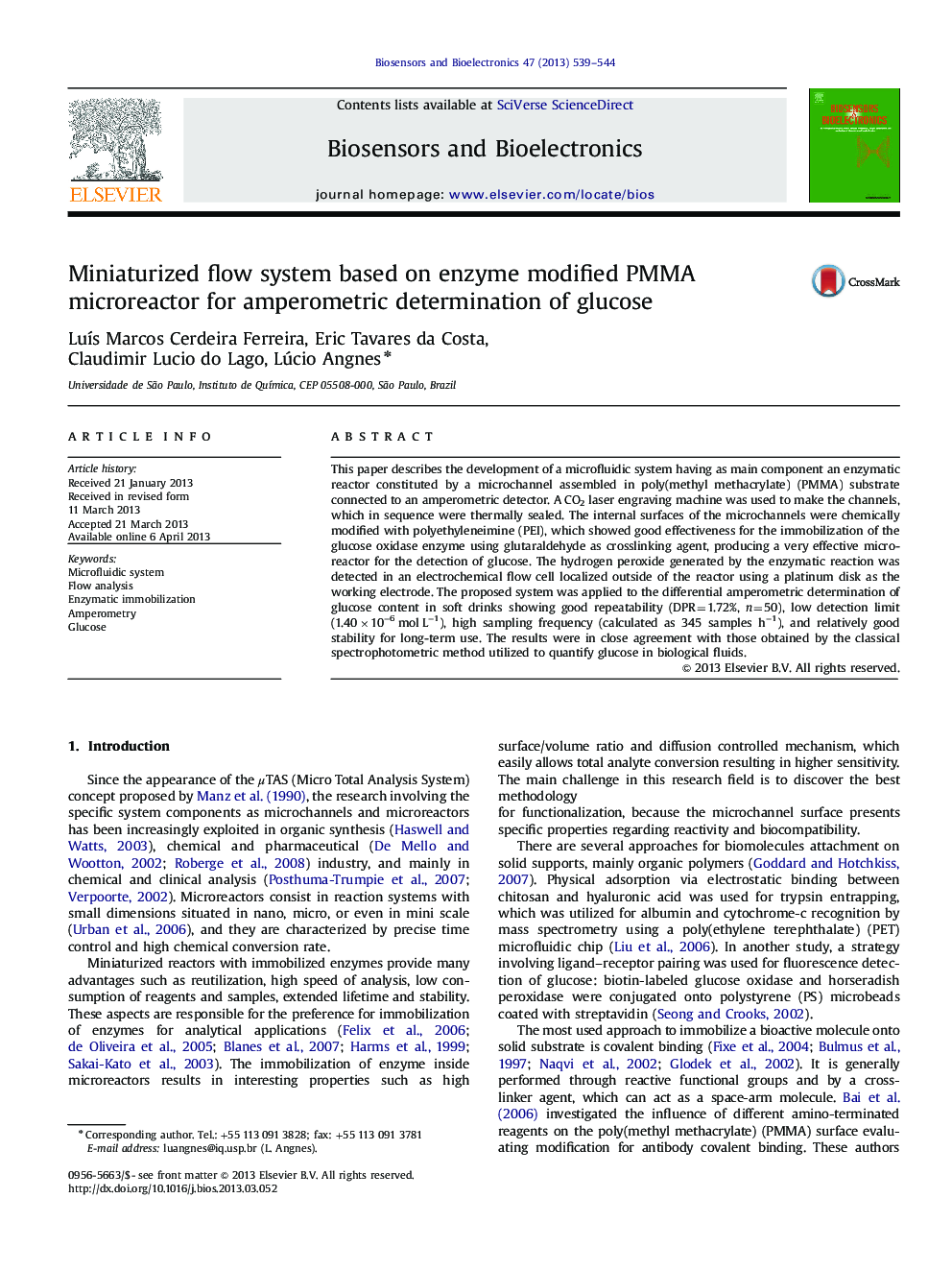| Article ID | Journal | Published Year | Pages | File Type |
|---|---|---|---|---|
| 867006 | Biosensors and Bioelectronics | 2013 | 6 Pages |
•The microfluidic device is easy to construct and assemble, favoring the prototyping.•The enzymes immobilization process is simple, needs small amounts of reagents.•The elevated reason walls area/volume of analyte favors the biotransformation.•Amperometry coupled to flow injection analysis results in elevated throughputs.
This paper describes the development of a microfluidic system having as main component an enzymatic reactor constituted by a microchannel assembled in poly(methyl methacrylate) (PMMA) substrate connected to an amperometric detector. A CO2 laser engraving machine was used to make the channels, which in sequence were thermally sealed. The internal surfaces of the microchannels were chemically modified with polyethyleneimine (PEI), which showed good effectiveness for the immobilization of the glucose oxidase enzyme using glutaraldehyde as crosslinking agent, producing a very effective microreactor for the detection of glucose. The hydrogen peroxide generated by the enzymatic reaction was detected in an electrochemical flow cell localized outside of the reactor using a platinum disk as the working electrode. The proposed system was applied to the differential amperometric determination of glucose content in soft drinks showing good repeatability (DPR=1.72%, n=50), low detection limit (1.40×10−6 mol L−1), high sampling frequency (calculated as 345 samples h−1), and relatively good stability for long-term use. The results were in close agreement with those obtained by the classical spectrophotometric method utilized to quantify glucose in biological fluids.
